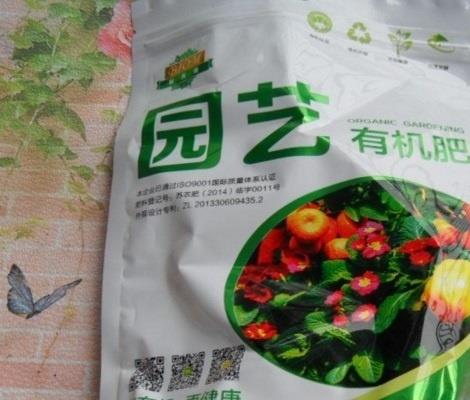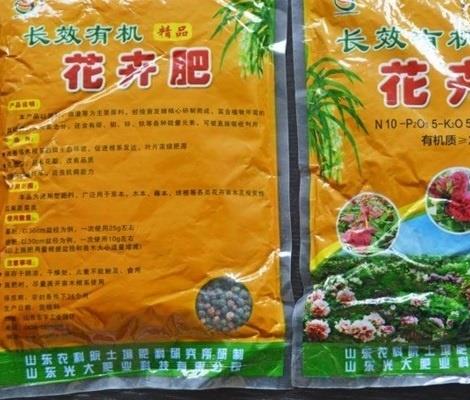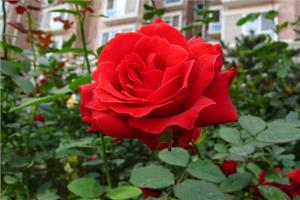What kind of flower fertilizer do you use to grow flowers and how to fertilize them?
To grow flowers, it is necessary to get in touch with some knowledge of growing flowers and learn how to grow good flowers. There are many plants that can't grow well if they don't have enough nutrients, and it's very useful to use fertilizer at this time. Next, let's find out what kinds of flower fertilizers are used and how to fertilize flowers.

What are the commonly used flower fertilizers?
(1) organic fertilizer. It is usually divided into animal organic fertilizer and seedling plant organic fertilizer. Animal organic fertilizer includes human feces and urine, feather hoof horns and bone meal of livestock, wastes of fish, meat, eggs and so on. Plant organic fertilizer includes bean cake and other cake fertilizer, sesame sauce dregs, weeds, leaves, green manure, Chinese herbal medicine dregs, distiller's grains and so on.
These two kinds of flower fertilizers are late-acting fertilizers with complete nutrients and long fertilizer effect, which can only be applied after fermentation and ripening before use.
(2) Inorganic fertilizer. It is a fertilizer rich in mineral and nutrient elements, which is made by chemical synthesis or processed by natural ore. For example, nitrogen fertilizer includes urea, ammonium sulfate, ammonium chloride, ammonium nitrate and so on. Phosphate fertilizer includes calcium superphosphate, phosphate rock powder and so on. Potash fertilizer includes potassium chloride, potassium sulfate and so on. The fertilizer effect of chemical fertilizer is fast, but the fertilizer content is simple; the fertilizer is violent, but not long-lasting. Except for phosphate fertilizer, general chemical fertilizer is used as topdressing.
Second, how to apply fertilizer to grow flowers?
1. Fertilize when planting. If your flowers are bought in bloom and need to be planted immediately, you need to pay attention to fertilizing at this time. Fertilizer can not be applied chemical fertilizer, chemical fertilizer is quick-acting fertilizer, so it can not be used during plant transplant, "big damage is not much help". You can choose organic fertilizer as the bottom fertilizer for potted plants, and it is better to apply 1-1-4-1-5.
two。 Fertilize in spring. With the temperature rising in spring, most of the flowers and plants raised by families begin to sprout and grow new leaves, which is in need of nutrition at this time. You can loosen the soil and bury an appropriate amount of flower fertilizer (mainly organic fertilizer or fertilizer rich in organic matter) under the soil 5cm, at least under 2cm. Proper watering and compaction can be done. During this period, enough fertilizer should be applied less times, at most once a month.
3. Fertilize in summer. The temperature is very high and the growth is very fast, so fertilization should be based on high nitrogen fertilizer. At this time, you can talk about nitrogen-rich fertilizers that dissolve in water and wet the soil every 5-7 days. It can have a good effect of fertilization. Remember, apply a small amount of fertilizer several times.

4. Fertilizing in late autumn. It's almost winter, and the temperature is going to get colder soon. at this time, you must remember to apply fertilizer once. After allowing plants to absorb enough nutrients, they can enhance their resistance to stress and will not be frozen. At this time, fertilization is mainly high-potassium fertilizer, but also soluble in water, a small amount of multiple fertilization.
5. In winter, except for indoor shade-loving plants, there is no need to apply fertilizer. Fertilization in winter, it is best to apply low nitrogen fertilizer, can not grow leaves, otherwise easy to frostbite.
The above is the introduction of this article, I believe you have a simple understanding after reading it, if necessary, you can continue to pay attention to the No. 1 home network for more information.
- Prev

Domesticated plants that purify indoor air let you breathe fresh air all the time.
Domesticated plants that purify indoor air let you breathe fresh air all the time.
- Next

Does it need to be fertilized to cultivate rich trees? how to fertilize rich trees?
Does it need to be fertilized to cultivate rich trees? how to fertilize rich trees?
Related
- Wuhan Hospital Iron Tree Blooming Result Was Instantly Frightened by the Gardener Master
- Which variety of camellia is the most fragrant and best? Which one do you like best?
- What is the small blue coat, the breeding methods and matters needing attention of the succulent plant
- Dormancy time and maintenance management of succulent plants during dormancy
- Minas succulent how to raise, Minas succulent plant pictures
- What are the varieties of winter succulent plants
- How to raise succulent plants in twelve rolls? let's take a look at some experience of breeding twelve rolls.
- Attention should be paid to water control for succulent plants during dormant period (winter and summer)
- Watering experience of twelve rolls of succulent plants
- Techniques for fertilizing succulent plants. An article will let you know how to fertilize succulent plants.

